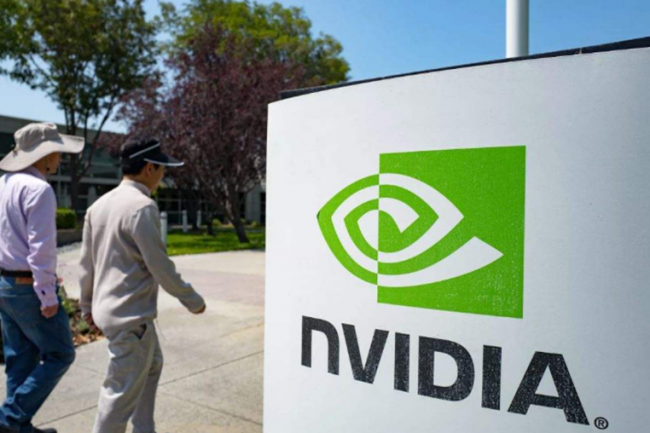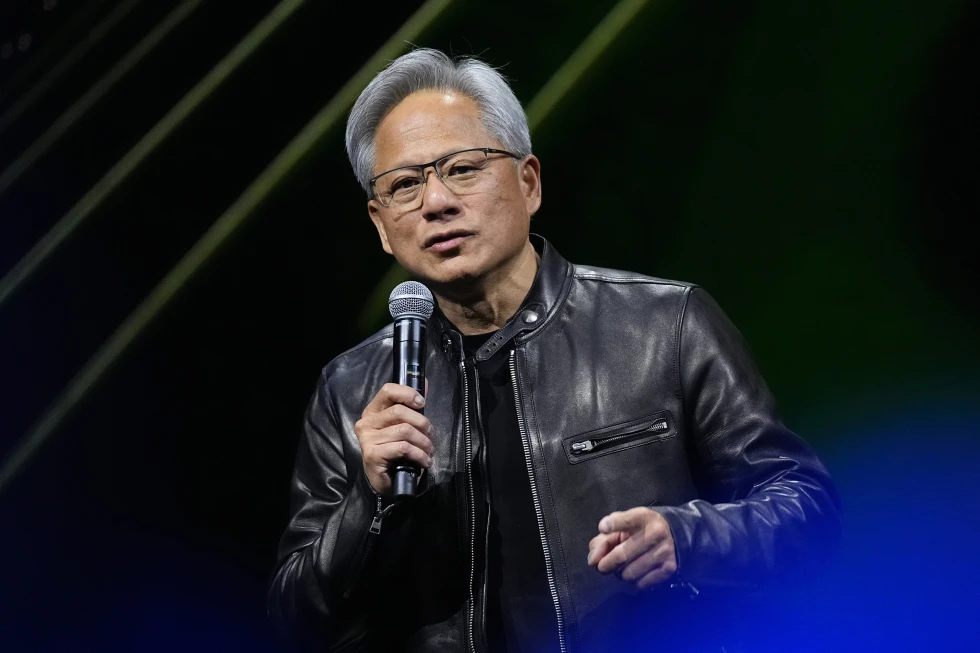In the rapidly evolving landscape of technology, artificial intelligence (AI) stands out as a transformative force poised to redefine industries, reshape labor markets, and revolutionize the everyday lives of individuals across the globe.
As the epicenter of technological innovation, California has once again demonstrated its commitment to leading the charge in the development and application of AI through a strategic partnership with the tech giant Nvidia.
This collaboration, announced by California Governor Gavin Newsom, aims to train students, college faculty, developers, and data scientists in generative AI, thereby ensuring that the workforce is adequately equipped to thrive in an increasingly automated world.
This initiative emerges from a profound recognition of the critical need for educational resources that align with the demands of a technology-driven economy.
By focusing on community colleges, the initiative seeks to democratize access to advanced AI training, ensuring that individuals from diverse backgrounds have the opportunity to develop the skills necessary for success in a tech-centric workforce.
The potential for generative AI to not only augment existing roles but also to create entirely new job opportunities cannot be overstated. With this partnership, California is addressing a dual challenge: the urgent need for skilled AI professionals and the imperative of fostering an inclusive pathway to economic advancement for all citizens.
Governor Newsom articulated the urgency of the initiative, stating, “California’s world-leading companies are pioneering AI breakthroughs, and it’s essential that we create more opportunities for Californians to get the skills to utilize this technology and advance their careers.”
This acknowledgment underscores the dual role of education as both a catalyst for individual career advancement and a necessary foundation for ensuring California’s continued leadership in the global technological arena.
The added focus on community colleges is particularly noteworthy, as these institutions often serve as gateways for underrepresented and economically disadvantaged populations to access higher education and gain meaningful employment.
The initiative promises a multifaceted approach to education and training. By developing new curriculums and certifications tailored to the needs of the technology sector, California aims to create a comprehensive framework that encompasses not only technical skills but also the critical thinking and problem-solving abilities necessary for navigating the complexities of AI applications.
The inclusion of AI labs and workshops is an essential component of this strategy, as hands-on experience will be pivotal in enabling students and professionals to apply theoretical knowledge to real-world scenarios.
Furthermore, the partnership intends to expand the technical infrastructure required for effective AI learning.
Providing access to cutting-edge hardware and software aligns with the goal of creating a robust learning environment that can keep pace with the rapid advancements in AI technology.
For students and educators alike, having access to the latest tools is essential for fostering an immersive educational experience that reflects industry standards and practices.
As a result, participants will not only gain knowledge but will also cultivate a level of proficiency that enhances their employability and readiness to contribute meaningfully to their respective fields.
In addition to cultivating a skilled workforce, this initiative carries significant implications for state employment practices. As the partnership between California and Nvidia progresses, it encompasses the integration of AI specialists into government roles.
The introduction of new positions dedicated to AI within state agencies is indicative of the broader organizational shifts necessitated by the growing importance of AI technology in public administration.
This evolution will afford state departments the capacity to harness AI’s potential for improving services, streamlining operations, and optimizing resource allocation in service to the public.
Critically, this partnership also underscores a trailblazing model for collaboration between government entities and private sector leaders in pursuit of a shared objective: the cultivation of a society that is not only tech-savvy but also equipped to leverage the benefits of AI for broader societal advancement.
By aligning educational resources with the aspirations of industry and the government, the partnership serves as a roadmap for similar initiatives across the United States and around the world.
Nvidia, a leading semiconductor manufacturer headquartered in Santa Clara, California, has fundamentally altered the landscape of technology, particularly with its groundbreaking invention of the graphics processing unit (GPU).
Initially designed to enhance computer graphics and power the burgeoning PC gaming market, Nvidia’s evolution from a provider of graphics hardware to a pivotal player in the artificial intelligence (AI) sector epitomizes a remarkable industrial transformation.
This essay explores the escalating demand for Nvidia’s semiconductors, the intricacies of their application in AI, and the profound implications this technological revolution holds for various industries.
At the heart of Nvidia’s success lies its innovative approach to the GPU. Originally, GPUs were crafted to handle complex visual computations swiftly, allowing for a rich gaming experience and realistic graphics that set a new standard for PCs.
However, as computational demands grew and the complexity of algorithms escalated, the versatility of GPUs began to find applications beyond gaming.
Nvidia’s ability to re-engineer its products to cater to the needs of burgeoning fields like machine learning and AI has positioned the company as a linchpin in the narrative of technological advancement.
The company’s GPUs have emerged as the preferred choice for training and deploying complex neural networks, further underscoring their significance in the AI landscape.
As Jensen Huang, Nvidia’s founder, eloquently remarked, “We’re in the early stages of a new industrial revolution that will transform trillion-dollar industries around the world.”
This assertion is underscored by the exponential growth of AI technologies, particularly generative AI applications. ChatGPT and Google’s Gemini, both of which rely heavily on Nvidia’s specialized chips, exemplify the profound capabilities that such hardware enables.
These generative AI models are not merely software applications; they are intricate ecosystems that require substantial computational power and sophisticated algorithms to function effectively.
Without the robust architecture provided by Nvidia’s GPUs, these AI systems would struggle to deliver the seamless user experiences that have become synonymous with modern technology.
The demand for Nvidia semiconductors has surged as various sectors integrate AI into their operational frameworks. Industries ranging from healthcare to finance and entertainment to automotive are experiencing seismic shifts brought about by AI technologies.
For instance, in healthcare, AI systems powered by Nvidia’s GPUs are revolutionizing diagnostics and personalized medicine.
Such applications can analyze vast datasets, recognize patterns, and provide insights that were previously unattainable, thus leading to improved patient outcomes.
In finance, AI-driven algorithms are optimizing trading strategies, detecting fraudulent activities, and enhancing customer service through intelligent chatbots—all of which rely on the computational prowess of contemporary GPUs.
Moreover, the automotive sector is witnessing a renaissance driven by AI technologies, with Nvidia as a key player in this transformation.
The development of autonomous vehicles, which require real-time data processing and machine learning capabilities, is fueled by Nvidia’s hardware solutions.
Their innovative approach enables cars to interpret their surroundings, make decisions based on real-time data, and learn from previous experiences, underlining the critical role of Nvidia semiconductors in the evolution of transportation.
Despite the immense potential AI holds, it is imperative to approach its integration with a discerning perspective.

As industries endeavor to harness the capabilities of generative AI and intelligent systems, ethical considerations surrounding the use of these technologies must be prominent in discussions.
Issues such as data privacy, algorithmic bias, and the potential for job displacement necessitate a balanced conversation regarding the transformative power of AI.
Ensuring that these technologies are developed and implemented responsibly will be crucial in shaping a future that leverages their benefits while minimizing adverse consequences.
In conclusion, Nvidia’s evolution from a graphics chip manufacturer to a cornerstone of the AI revolution is emblematic of the broader technological advancements that are redefining industries globally.
The company has successfully positioned itself at the intersection of gaming and artificial intelligence, demonstrating how innovations can transcend their original purposes and catalyze new industrial paradigms.
As we stand on the precipice of what Jensen Huang describes as a new industrial revolution, the implications of Nvidia’s semiconductors extend far beyond individual applications; they herald a transformative era that holds the potential to reshape the economy, society, and the very fabric of our daily lives.
The journey ahead promises to be both exciting and complex, with Nvidia continuing to play a crucial role in navigating the challenges and opportunities presented by this unprecedented technological shift.
